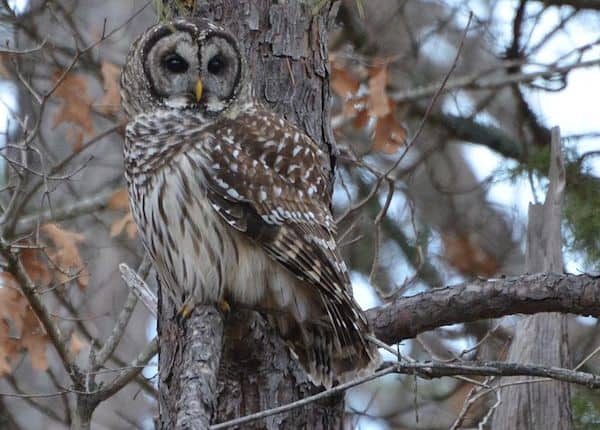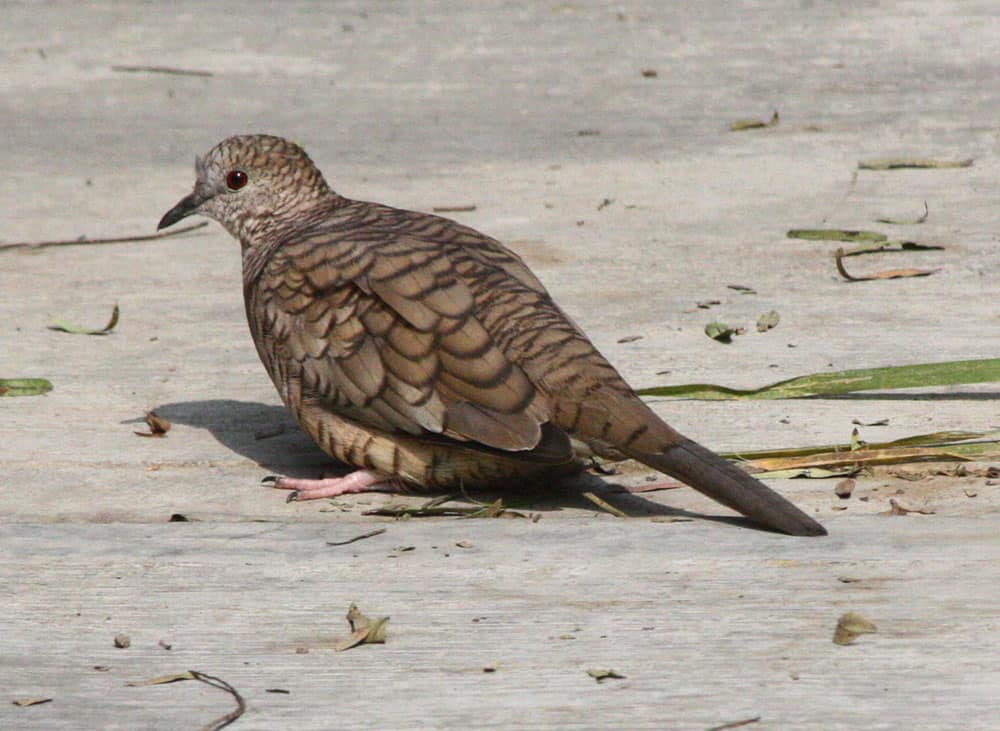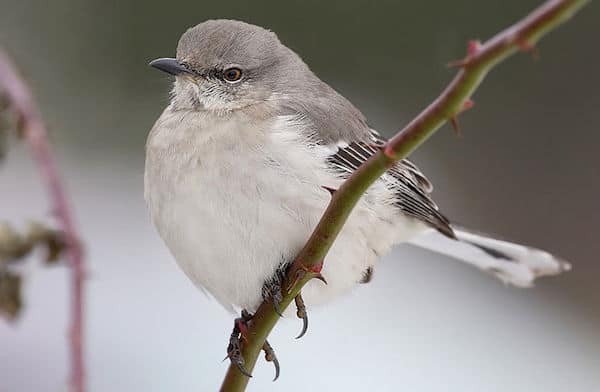Look For
“Sleek” is the word most often used to describe the silky fawn plumage of the cedar waxwing. A velvety-black bandit mask hides the eyes, and a bright yellow band tips the gray tail. Older birds have red tips on the secondary wing feather shafts, which look like shiny drops of sealing wax. Cedar waxwings are most often seen in flocks in fall and winter.
Listen for
Waxwings vocalize almost constantly, uttering a high, thin sreee! It’s not much of a song for such a lovely bird, but it is often your first clue that waxwings are around.
Find it
The cedar waxwing’s only real habitat requirement is the presence of fruit-bearing trees and shrubs; thus, it can be found everywhere except grasslands, deserts, and deep interior forests. Thought to be nomadic, the species does make a poorly understood migration that takes it as far south as southern Central America.
Feed it
Cedar waxwings travel in tight flocks to locate and feed on small fruits. They may be completely hidden in leaves as they flutter and pluck fruit, only to explode out with reedy calls and a rush of wings when startled. In late summer, they may be seen in twisting, dodging pursuits of winged insects over water.
Nesting Behavior
Though they defend no territory and in some places are semi-colonial, cedar waxwings are monogamous. Both sexes help build a bulky, cup-shaped nest in the outer canopy of a tree. Leaves, straw, twigs, and string, often in a trailing mass, comprise the nest. The female lays four eggs and incubates them for 12 days, while the male feeds her.
Young are fed on insects for the first two days, then solely on regurgitated fruits, leaving the nest around 15 days later. This fruit-based diet ensures that any parasitic brown-headed cowbirds hatching in their nests do not survive. Large flocks of immature birds (identifiable by their yellowish, streaked bellies) linger near breeding grounds for one or two months after the adults leave.
WOW!
Waxwings are sometimes found on the ground, appearing drunk and unable to fly after eating fermented (or too many) berries. They recover their senses after a short period.




